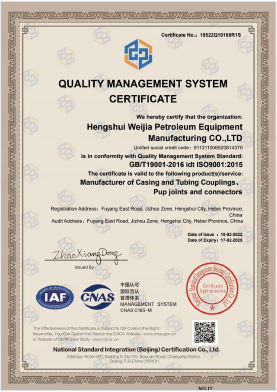- Afrikaans
- Albanian
- Amharic
- Arabic
- Armenian
- Azerbaijani
- Basque
- Belarusian
- Bengali
- Bosnian
- Bulgarian
- Catalan
- Cebuano
- Corsican
- Croatian
- Czech
- Danish
- Dutch
- English
- Esperanto
- Estonian
- Finnish
- French
- Frisian
- Galician
- Georgian
- German
- Greek
- Gujarati
- Haitian Creole
- hausa
- hawaiian
- Hebrew
- Hindi
- Miao
- Hungarian
- Icelandic
- igbo
- Indonesian
- irish
- Italian
- Japanese
- Javanese
- Kannada
- kazakh
- Khmer
- Rwandese
- Korean
- Kurdish
- Kyrgyz
- Lao
- Latin
- Latvian
- Lithuanian
- Luxembourgish
- Macedonian
- Malgashi
- Malay
- Malayalam
- Maltese
- Maori
- Marathi
- Mongolian
- Myanmar
- Nepali
- Norwegian
- Norwegian
- Occitan
- Pashto
- Persian
- Polish
- Portuguese
- Punjabi
- Romanian
- Russian
- Samoan
- Scottish Gaelic
- Serbian
- Sesotho
- Shona
- Sindhi
- Sinhala
- Slovak
- Slovenian
- Somali
- Spanish
- Sundanese
- Swahili
- Swedish
- Tagalog
- Tajik
- Tamil
- Tatar
- Telugu
- Thai
- Turkish
- Turkmen
- Ukrainian
- Urdu
- Uighur
- Uzbek
- Vietnamese
- Welsh
- Bantu
- Yiddish
- Yoruba
- Zulu
Stainless Steel Pipe Couplings for Secure and Durable Connections in Plumbing Systems
Understanding Stainless Steel Pipe Couplings A Comprehensive Guide
When it comes to piping systems, the durability and reliability of materials used are paramount. One of the most trusted materials in the industry is stainless steel, particularly when it comes to pipe couplings. Stainless steel pipe couplings are essential components that allow for the reliable joining of pipes, ensuring the integrity and longevity of a piping system. In this article, we will explore the features, benefits, types, and applications of stainless steel pipe couplings.
Features of Stainless Steel Pipe Couplings
Stainless steel pipe couplings boast several key features that make them a preferred choice for many industries. Primarily, stainless steel provides excellent corrosion resistance, a vital characteristic when pipes are exposed to harsh environments, chemicals, or varying temperatures. The alloying elements in stainless steel, such as chromium and nickel, enhance its resistance to rust and oxidation, making it ideal for both indoor and outdoor applications.
Additionally, stainless steel pipe couplings exhibit remarkable strength and durability. They can withstand high pressure and extreme temperatures, which is crucial in sectors like oil and gas, chemical processing, and manufacturing. This robustness reduces the risk of failure, leaks, or breakages, thus ensuring the safety and efficiency of the entire piping system.
Benefits of Using Stainless Steel Pipe Couplings
The advantages of utilizing stainless steel pipe couplings are numerous. First and foremost, their longevity leads to lower maintenance costs over time. Unlike other materials that may require frequent replacement, stainless steel has a much longer lifespan, which reduces downtime and costs associated with maintenance.
Moreover, stainless steel is highly versatile. It can be used in a variety of applications, from domestic plumbing to industrial pipelines. Whether it’s for water supply, gas distribution, or chemical transport, stainless steel couplings can accommodate different fluid types and conditions efficiently.
Another significant benefit is the ease of installation. Many stainless steel pipe couplings come with pre-fabricated designs that facilitate quick assembly, saving time and labor costs during installation. Their lightweight nature also allows for easier handling without compromising strength.
Types of Stainless Steel Pipe Couplings
pipe coupling stainless steel

Stainless steel pipe couplings come in various types depending on specific requirements and applications. The most common types include
1. Threaded Couplings These couplings feature internal threads that allow for easy connection between pipes without the need for welding. They are often used in plumbing applications.
2. Welded Couplings For applications requiring a stronger bond, welded couplings offer a permanent solution. They are typically used in high-pressure systems and can handle extreme conditions.
3. Socket Weld Couplings These couplings are designed for pipes that are joined using a socket weld. They provide a smooth internal surface, reducing turbulence and ensuring better flow rates.
4. Flanged Couplings Flanged couplings are widely used in situations where frequent disassembly is required. They allow for easy connection and disconnection of pipes while providing a reliable seal.
Applications of Stainless Steel Pipe Couplings
Stainless steel pipe couplings are utilized across diverse industries such as
- Oil and Gas For transporting hydrocarbons safely and efficiently. - Pharmaceuticals In systems requiring stringent hygiene and pressure conditions. - Food and Beverage Ensuring compliance with health regulations while allowing for safe transportation of consumables. - Construction Providing robust connections in various applications, such as HVAC systems or plumbing.
Conclusion
In conclusion, stainless steel pipe couplings offer a combination of durability, versatility, and ease of installation that makes them an excellent choice for a wide range of piping applications. Their ability to withstand harsh conditions while providing reliable performance ensures that industries can maintain high standards of safety and efficiency. As technology and material science advance, the role of stainless steel in piping systems will continue to evolve, further optimizing performance across various sectors.
-
Tubing Pup Joints: Essential Components for Oil and Gas OperationsNewsJul.10,2025
-
Pup Joints: Essential Components for Reliable Drilling OperationsNewsJul.10,2025
-
Pipe Couplings: Connecting Your World EfficientlyNewsJul.10,2025
-
Mastering Oilfield Operations with Quality Tubing and CasingNewsJul.10,2025
-
High-Quality Casing Couplings for Every NeedNewsJul.10,2025
-
Boost Your Drilling Efficiency with Premium Crossover Tools & Seating NipplesNewsJul.10,2025







